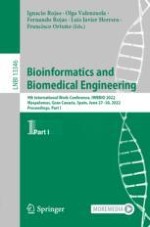2022 | OriginalPaper | Buchkapitel
COVID-19 Severity Classification Using a Hierarchical Classification Deep Learning Model
verfasst von : Sergio Ortiz, Juan Carlos Morales, Fernando Rojas, Olga Valenzuela, Luis Javier Herrera, Ignacio Rojas
Erschienen in: Bioinformatics and Biomedical Engineering
Aktivieren Sie unsere intelligente Suche, um passende Fachinhalte oder Patente zu finden.
Wählen Sie Textabschnitte aus um mit Künstlicher Intelligenz passenden Patente zu finden. powered by
Markieren Sie Textabschnitte, um KI-gestützt weitere passende Inhalte zu finden. powered by
